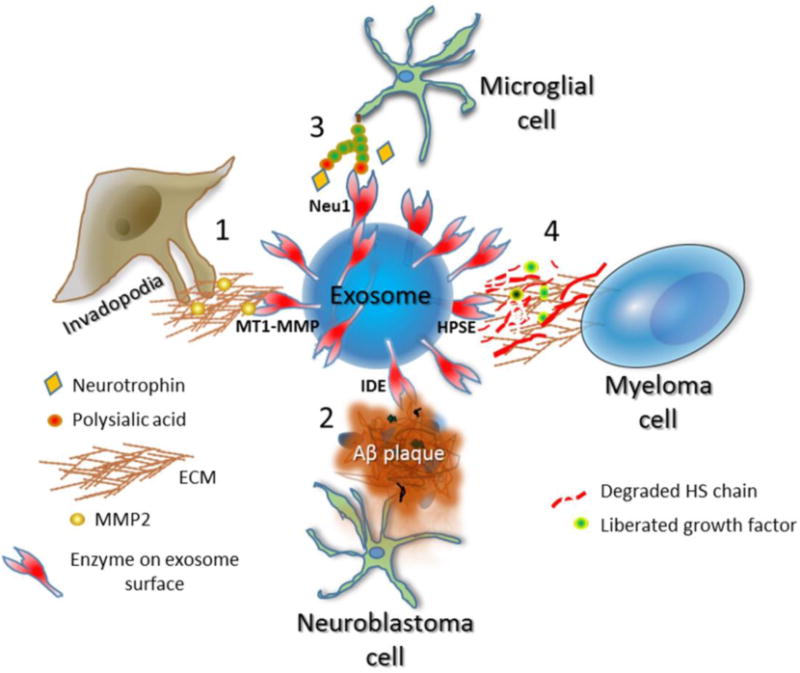Figure 2.

Examples of enzymes on the exosome surface and their known functions. Depicted is an exosome having active enzymes on its surface and the functional impact of those enzymes within the extracellular space. The specific enzyme present depends on the cell that secreted the exosome. 1, MT1-MMP is on the surface of exosomes secreted at the site of invadopodia formation in breast and other cancers. MT1-MMP mediates shedding of cell surface molecules including syndecan-1 and CD44 and degrades fibrillar collagens, a host of other matrix molecules including fibronectin and vitronectin, and soluble molecules within the extracellular space. In addition, MT1-MMP activates MMP-2. Through this range of activities, MT1-MMP on the exosome surface may contribute to tumor migration and invasion as well as angiogenesis. 2, N2a neuroblastoma cells or BV-2 microglial cells secrete exosomes having a high level of insulin-degrading enzyme (IDE) on their surface. This enzyme is capable of degrading Aβ peptides that are prevalent in Alzheimer’s plaques. Statins enhance secretion of these exosomes containing high IDE levels and thus could prove therapeutically useful to attack plaques and diminish Alzheimer’s disease progression. 3, Microglial cells have high levels of polysialic acid on their surface. When stimulated by LPS, the cells rapidly enhance secretion of exosomes having the sialidase neuraminidase 1 (Neu1) on their surface. The sialidase cleaves the polysialic acid thereby liberating neurotrophic factors that are bound to the polysialic acid. The released neurotrophic factors have functional impact by regulating neural cell development and growth. 4, Myeloma cells expressing a high level of heparanase (HPSE) secrete exosomes having HPSE localized to the exosome surface. When added to ECM, the HPSE on the exosomes is capable of degrading heparan sulfate (HS) chains embedded within the ECM. This likely liberates growth factors bound to HS and by degrading ECM promotes tumor invasion and metastasis. Treatment of the myeloma cells with chemotherapeutic drugs enhances the secretion of exosomes loaded with HPSE as cargo leading to enhanced ECM degradation.
